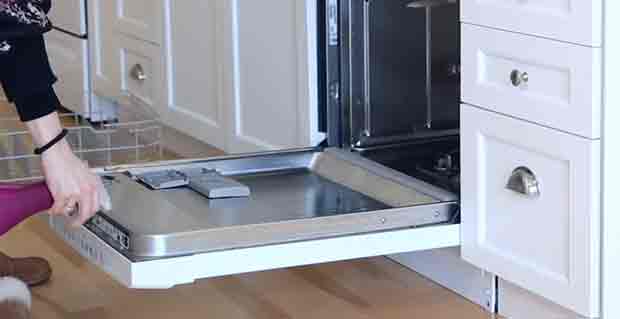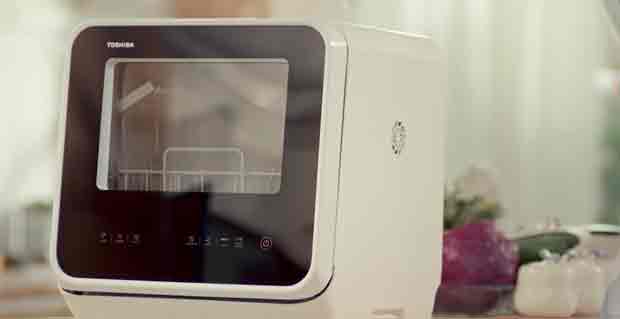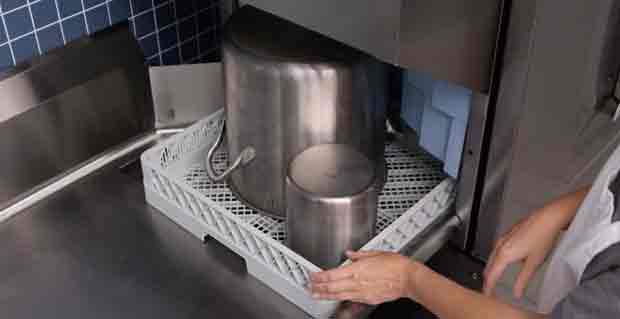Dishwashers are a modern convenience that we take for granted. The first was invented by Joel Houghton, of Michigan, in 1850.
The dishwasher saves time, water, and energy. It also prevents the spread of bacteria because it sterilizes dishes as they are washed.
However, many people don't know how to use one properly or even what features to look for when buying one. So, how to use the commercial dishwashers in the most effective and efficient way?
How to Use A Commercial Dishwasher : Easy Guide

Step 01: Load the Dishwasher
Load the dishwasher carefully and make sure that everything is secure. If you're working with a commercial dishwasher, it's important to check your manual first and find out what kind of utensils or surfaces should be used.
Make sure that all dishes and utensils are rinsed thoroughly before they go into the dishwasher. This is also a good time to check for any damage or signs of wear and tear on the machine itself.
Step 02: Determine the Setting
It's better to use less water when possible, so it's important to choose settings that will get your dishes clean without wasting too much water in the process.
Start with hot water, high-temperature settings to break down grease and food particles. A booster heater is a heating element that adds extra heat to the wash, saving you time and energy.
Low temp and rinse-only options should be used for specific settings and materials. In particular, a glass washer would be useful for this kind of job.
Low temp and high heat are good for glasses and plastics, as it helps prevent the buildup of debris and residue. As high heat can warp or melt glasses, low temp is best.
Step 03: Add the Dishwashing Detergent
Commercial dishwasher machines are made to use specific types of dishwashing detergents that are specially formulated for use in a commercial kitchen.
Make sure that you never use bleach or chlorine-based products on dishes, as these can damage or corrode parts of the dishwasher.
Step 04: Set the Timer and Heat Dry
The final step is to set a timer this way; you can control how long your dishes will spend in the machine and give them time to dry properly.
You'll need to open up the door and let out any steam before removing anything from inside the dishwasher.
Step 05: Clean the Dishwasher

This is an important part of the process you'll need to clean your commercial dishwasher regularly, especially if it is used in a high-risk area for cross-contamination, like a kitchen.
Make sure that any soap scum or stuck-on food particles are removed before you start the dishwasher again.
It's good to remember that commercial dishwashers are different from residential ones, and some of the settings and features may not suit your needs perfectly.
Types of the Commercial Dishwasher:
i) Undercounter Dishwasher
Undercounter commercial dishwashers are a type of dishwashing machine that is built under the kitchen counter and usually features a stainless steel exterior.
They are designed to make efficient use of space, but they tend to be more expensive than their countertop counterparts. This solution is perfect for high-traffic areas and busy kitchens.
ii) Countertop Dishwasher
These are less expensive than under-counter dishwashers and can be placed on the counter. The majority of countertop dishwasher models also come with folding tines that allow you to stack dishes inside for more efficient use of space.
This residential dishwasher is great for smaller kitchens that need extra equipment without taking up too much space.
iii) Door Type Dishwasher
This type of dishwashing machine is perfect for any space where a large number of dishes need to be cleaned quickly, such as a backstage area at a theater.
Door-type dishwashers will clean up to 50 dishes per hour and feature multiple compartments so any necessary pre-rinsing can be done directly in the machine.
iv) Flight Type Dishwasher
These machines are perfect for larger kitchens and catered functions. They feature a large capacity and will clean dishes up to 600 plates per hour. Flight-type dishwashers can also incorporate other appliances such as steamers, water heaters, and sterilizers.
v) Portable Dishwasher

Portable dishwashers are not attached to the counter or sink, but often require hookups for water and drain lines. They are usually smaller than countertop models, making them ideal for small households that don't need an extra appliance taking up space on their counters.
Features of the Commercial Dishwasher:
01) Adjustable Upper Rack
This is a great feature that allows you to adjust the height of the top dish rack. This feature can be extremely convenient, especially for tall cups and glasses.
Adjusting the rack will make it easier for you to fit in more dishes or larger items like pots and pans.
02) Removable Tines
Most dishwashers come with removable tines, but this feature is often overlooked. Removable tines are great for kitchens that need to use specific dishes for certain tasks, like pastry brushes or food processors. They can also be used as compact storage whenever the conveyor dishwasher isn't in use.
03) Fold Down Tines
This feature allows you to stack dishes, which can save a lot of space. Fold-down tines are great for families that have a large number of dishes or if your dishwasher is going to be used for other purposes, like washing produce.
04) Silverware Basket
A silverware basket is a good solution if your kitchen doesn't have enough counter or drawer space for individual silverware storage.
This feature can also be great if you frequently use temporary dishwashing stations, like catered events. It streamlines the process and makes it easier to return items quickly.
05) Water Filtration System
Water filtration systems are especially important for commercial dishwashers that use water from a municipal source.
These systems remove chlorine and other chemicals from the water, which prevents them from leaving behind an unpleasant taste or smell.
Purchase Considerations for Commercial Dishwashers

01) Local Codes and Regulations
Be mindful of local codes and regulations. These requirements vary depending on where you live, but they often include specific features like filters for treated water or dishwashers that are certified by an outside organization.
For example, NSF International is responsible for certifying commercial dishwashers used in food service establishments.
02) Capacity
Capacity is another important consideration. If you have a large number of dishes to clean at once, you'll need a dishwasher with a larger capacity. Look for a wash cycle that can wash around 27 gallons at a time.
A family of four or five may only require around 18 gallons, however, so pay attention to the water and energy efficiency of the dishwasher.
03) Energy and Water Consumption

Commercial dishwashers use a lot of power and water, so you should look for models that have a high Energy Factor (EF).
An EF measures how much water or electricity is used by the machine to clean one load of dishes. Machines with an EF over 0.6 should be sufficient.
04) Noise
Noise is another concern, especially if you have a dishwasher in a very small kitchen. Look for a machine with insulation or padding to dampen the noise of running water and appliances inside the dishwasher.
It may not seem important but it can make a lot of difference if there's no other soundproofing in your kitchen.
Conclusion
A commercial dishwasher is an expensive investment, but it can be a great solution for kitchens that need additional appliances. Explore the features and consider how the commercial dishwasher will fit into your existing kitchen appliances before making a purchase.
We hope our provided guides help you to use the commercial dishwasher. We tried our best to provide in-depth information regarding how to use the commercial dishwashers in minimal words.



